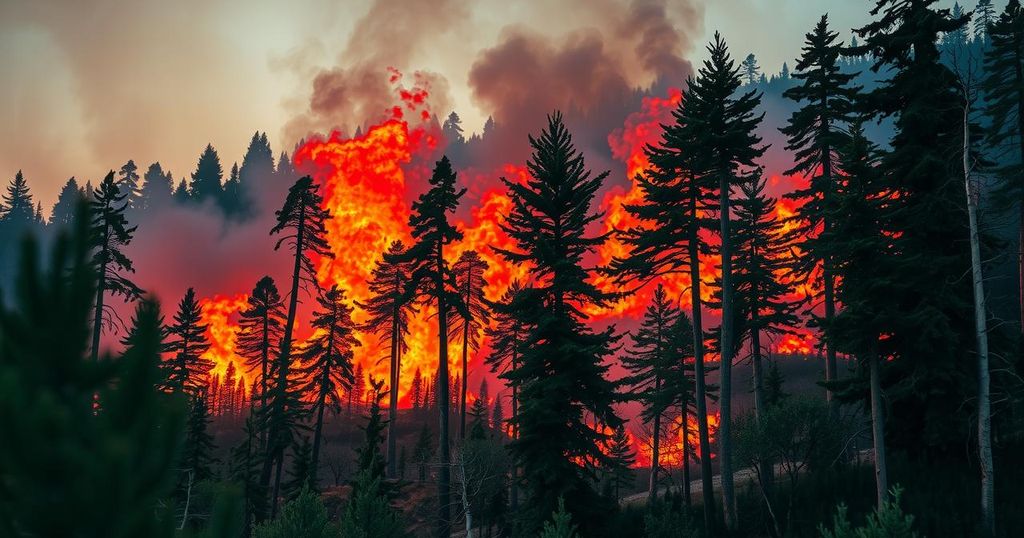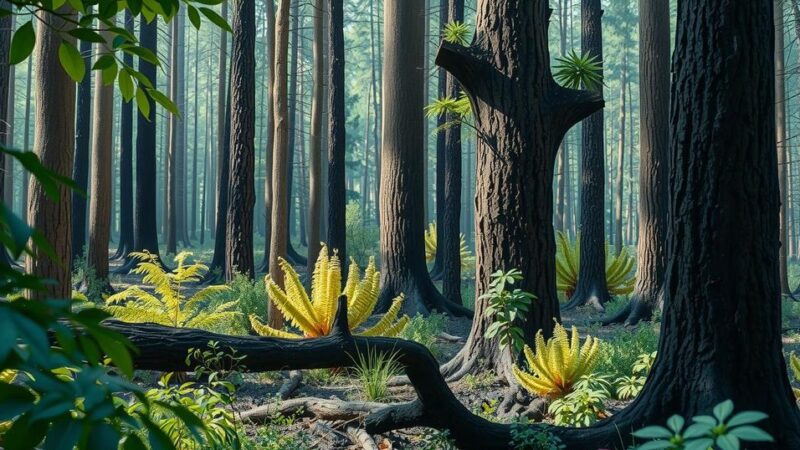Recent discussions indicate that while climate change contributes to harsh weather conditions, attributing wildfires solely to global warming is misleading. Historical evidence suggests that natural climate cycles have long influenced wildfire patterns, with human activities significantly impacting fire severity. Reporting indicates a high percentage of wildfires are caused by human actions, highlighting the need for a broader understanding of wildfire causation.
Recent discussions surrounding the correlation between climate change and the increase of wildfires have sparked debate. Extended periods of heat and drought indeed provide favorable conditions for forest fires; however, attributing the recent surge in wildfire occurrences solely to human-induced climate change is misleading. Historical data illustrate that such conducive weather traits have been characteristic of natural climate cycles for millennia.
Notably, severe wildfires have been documented in the Western United States during critical periods, such as the 1800s and the Medieval Warm Period, while the mid-20th century bore witness to some of the least destructive fire seasons. This contradiction suggests that natural climate variability has significantly influenced historical fire patterns. Furthermore, human activity, such as land clearing for agriculture, logging, and the building of infrastructures, has profoundly affected wildlife dynamics over centuries.
Analysis of forest fire records from the contiguous U.S. reveals a lack of significant long-term trends. Data spanning from 1916 to the early 2000s show that fires were comparable in scale during various periods. It is noted that most forest fires are human-induced, accounting for a substantial majority across North America. For instance, arson and accidental ignitions remain prevalent both historically and currently, evidenced by the fact that 75% of wildfires in Oregon and Washington were deemed human-caused by 2021.
The impact of human behavior on wildfire severity cannot be overstated. Studies highlight that nearly 86% of California’s wildfires arise from human activity since the 1990s. The ecological effects of fires instigated by humans tend to be more severe when compared to those triggered naturally, primarily due to the conditions under which they ignite. While some attribute intensified fires to pest damages, it is critical to acknowledge that these outbreaks often stem from shifts in forestry practices and incidents of decreased timber harvesting, which have contributed to the decline of forest health.
Furthermore, the longstanding natural climatic conditions, intertwined with human impacts, reveal the intricacies behind wildfire behavior. The evidence supports the notion that intensified logging restrictions and fire suppression efforts since the 1980s have played a key role in influencing current wildfire patterns, complicating the narrative associated with climate change. This context is necessary for understanding the historical and ongoing contributions of various factors leading to shifts in wildfire severity.
The primary focus of this article is to clarify the relationship between climate change and wildfires, emphasizing that natural climate cycles have historically created conditions favorable for wildfires, independent of human-induced climate changes. It discusses how human activities, including land management and agricultural practices, have also influenced the severity and frequency of wildfires throughout history, suggesting that attributing current wildfire issues solely to global warming may not provide a complete picture. The historical context of fire incidences, alterations in forestry practices, and the role of human ignition sources are highlighted to support this view.
In summary, while climate change presents challenges in terms of increased temperatures and drought, it is insufficient to solely attribute the escalation of wildfires to these factors. Historical patterns reveal that human activities and natural climate variations have significantly shaped wildfire dynamics over time. Therefore, comprehensive approaches addressing human-caused fires and land management practices are essential for effectively mitigating wildfire risks moving forward.
Original Source: www.dailysignal.com






